
IT MAKES ME HAPPY TO MAKE THEM HAPPY!
IT MAKES ME HAPPY TO MAKE THEM HAPPY!
NAPPS Certified Professional Pet Sitter
Bonded and Insured
Certified in Dog and Cat First Aid
Serving the Beautiful Southern Berkshires
Pet Pages
Pet Pages
An ongoing series of informational, fun and cute accounts from an animal lover and professional pet sitter in the southern Berkshires
An ongoing series of informational, fun and cute accounts from an animal lover and professional pet sitter in the southern Berkshires
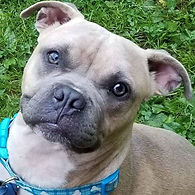
Southern Dogs, Northern Dreams
Southern Dogs, Northern Dreams
January 2023
I don't know why this seems to be a growing trend, but there are a lot of dogs coming up north from the south. Have you seen those videos of busloads of dogs being unloaded? There seems to be a different mindset down south. I don't like to speak in general terms, but Southerners often don't spay and neuter their dogs so the population of homeless and unwanted dogs keeps rising. Thankfully, there are loving homes up here in New England waiting with open arms.
It's been difficult for many people to locate adoptable dogs during this time of COVID. The shelters are empty for the first time in a very long time. Many people are now able to work from home and can devote the time to caring for a dog. It has been wonderful for the shelters and the dogs, but frustrating at times for the people looking to adopt.
I hope in time, the demand and the supply even out. It pains me to think of all of these little pups running around down there. They are often picked up on the streets as strays. It warms my heart every time I see an adorable pup in a loving home, especially after learning about their backstory and their journey to get here. From the southern states to the Berkshires! It's really lovely!
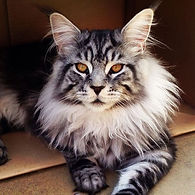
10 Facts About Maine Coon Cats
10 Facts About Maine Coon Cats
July 2022
I've been fascinated with Maine Coon cats for a long time. I thought I'd share some of my research on these amazing creatures. Here are 10 interesting facts about Maine Coon cats.
1. The Maine Coon was first documented in 1861.
2. The Maine Coon is the official cat for the State of Maine.
3. Many Maine Coons like water.
4. Maine Coons are one of the largest domestic cat breeds weighing up to 35 pounds!
5. The breed is solid and rugged and can handle harsh winter climates.
6. Maine Coons come in a wide variety of colors and fur patterns.
7. Their full size is normally not reached until they are three to five years old.
8. The Maine Coon is now one of the more popular cat breeds in the U.S.
9. The Maine Coon cat's life span is from 9-15 years.
10. Maine Coon cats are said to be the “dogs of the cat world” not just because of their size but due to their personalities.
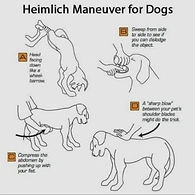
Heimlich Maneuver for Dogs and Cats
Heimlich Maneuver for Dogs and Cats
January 2022
Dogs and cats can choke on many things: food, toys, or random objects that look edible. In case of an emergency, do you know how to perform the dog Heimlich Maneuver?
What do you do when a dog or cat starts choking? There is such a thing the dog and cat Heimlich maneuver. It's just a slightly different approach from what you would do for a human. When a dog or cat chokes, it can be a scary situation for any pet parent. Knowing what to do in a choking emergency can help you take control of the situation.
The Heimlich maneuver is a live-saving technique that must be performed if your dog or cat is choking. The Heimlich maneuver for a small dog is similar to that for a cat. First, carefully approach your dog or cat and speak slowly in a soothing voice. Even if your pet has never bit anyone, he or she might snap if feeling afraid.
Place one hand on top and one hand on the underside of your pet's snout and gently open their mouth. Look inside to see if you can see something blocking their airway. If you see an object, try to remove it by hand, being careful not to let your pet bite you. If you cannot see the object or if you cannot reach it, or if the animal becomes unconscious, you may need to administer the Heimlich maneuver. To do this apply abdominal thrusts just behind (or below) the ribs. See the image in the box up to the left for reference. Learning and practicing the Heimlich Maneuver may just save your pet's life some day!
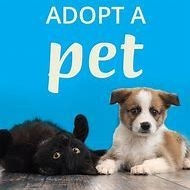
Pet Adoptions Are At An All-Time High!
Pet Adoptions Are At An All-Time High!
July 2021
Many people have asked me if I know of any adoptable dogs and cats. There is currently a shortage of cats and dogs in animal shelters due to the Pandemic. People are home more so it's an opportune time to welcome a new pet into your lives. It warms my heart knowing so many shelter animals have found homes. I just hope we don't see over crowded shelters once people head back out of the house. Let's make sure these little furry critters keep the love and warmth of a loving home they so deserve. And, please think twice before buying a dog or cat from a pet store. Unscrupulous people will always take advantage of an opportunity to make money. And, I fear they will try to overproduce and overbreed in order to fill the need. The Amish are notorious for treating dogs and cats as livestock and breed them under horrific conditions. Please don't ever buy from a big breeding farm like that. Help save the fur babies! Adopt, don't shop, if you can. The Berkshires are a lovely place for all animals to live.
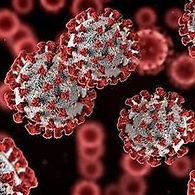
COVID-19 and Your Pets
COVID-19 and Your Pets
January 2021
I've seen and heard a lot of rumors going around about pets and the idea that they can contract and pass COVID-19 on to humans. Being a Professional Pet Sitter, I'm around lots of animals. I knew I needed to be proactive because health and safety of my furry clients and their humans is paramount to me. I contacted a few Veterinarians I trust for their expertise on this topic. They both assured me that animals can contract coronavirus, however not the strain seen in COVID-19. The kind found in animals is a more of a typical cold strain of coronavirus. That being said, there is a very remote possibility animals could potentially pass on COVID-19 if an infected person coughed or sneezed on the animal and then someone else touched it immediately after. That scenario seems very remote to me however, I'm taking every precaution by washing my hands frequently and using hand sanitizer after I leave a client's home. So, go ahead and give your pets the same love, if not more than usual. I think we all need it right now!! Be well!

A Handy Safety Device to Keep on Hand When Walking Your Dog
A Handy Safety Device to Keep on Hand When Walking Your Dog
July 2020
I typically do 1-4 hours of dog walking every day. My walks are normally uneventful and pleasant but every now and then I run into a loose animal. Sometimes the event is fine and sometimes it is not.
Just the other day, I was walking a client's dog Lila, as I have been for the past 3 years. On this particular day, we were returning from a nice walk down my client's long, winding driveway when all of a sudden Lila began barking. She is normally very quiet so I immediately knew something was up. We rounded a curve and I saw two loose dogs coming towards us. Although Lila loves to play with other dogs I always limit contact with them because you just never know how they are going to react at a first meeting.
Lila became very excited as we approached the other dogs. They sniffed each other and I thought, ok this is going well but then one of the dogs began growling and showing his teeth. Lila did the same in response and I knew that this was not a good situation. It was then that I realized I had to somehow get Lila back into the house in order to ward off a possible attack. We were easily a few hundred feet from the house and the two dogs began to follow us. I realized at that moment that I left my air horn in my car so all I could do was to make myself as scary as possible and try to run those dogs off, all while ushering my dog closer and closer to the house.
It worked to a certain degree and I was able to get my client's dog in the house safely. It was very scary and taught me not to leave my air horn in the car. It was a close call and a reminder that I must carry my air horn in my pocket at all times when I'm out walking. If I had it in my pocket, I'm fairly certain it would've been much more effective at scaring off the aggressive dogs. All in all, it was unnerving but I was pleased with the outcome as it could've been catastrophic.
I suggest everyone carry a dog horn when walking their dogs. You just never know what or whom you are going to run into on your walk. It is so much better to be prepared, than to be sorry later. Here is a link to the one I use. Some people take it a step farther and carry a pepper type spray but I am an animal lover and don't wish to cause discomfort to any living creatures. The funny thing about this whole story is that the two strays were super friendly with me after I put Lila in the house. It just reinforces how unpredictable dogs can be.

Riding Safely in the Car
Riding Safely in the Car
January 2020
I see so many dogs riding in cars hanging their heads out of a window. Although it looks like they are having the time of their lives, it is so dangerous. I can't tell you how many terrible accidents I've heard of due to dogs not being properly restrained in cars. We wouldn't let our kids ride like this so why do we think it is safe for our beloved pets? It really scares me when I see it. I never allow my dogs or any clients I am transporting to travel in this dangerous manner. There are several ways to safely transport a dog.
1. Soft crates keep your dog safe and comfortable. This is my preferred method for my little dachshunds. They eagerly go in their crates when we set out for a ride. I drive knowing that my dogs are safely secured.
2. Dog seat belts were designed with safety in mind. They typically have a harness rather than attaching to the dog's collar. They keep your dog from being propelled in the event or a short stop or an accident.
3. Dog car hammocks are nice for larger dogs. They attach to the back of the front seats and to the front of the rear seats. They act as a buffer for your pet between the rows of seats. Your dog can still be jostled around in the event of a short stop or an accident but they are much more protected than if they were loose.
All of these safety methods are readily available at pet stores and online. Do your pet a favor and keep him or her safe. They'll still have fun being with you in the car but the chances of them getting hurt are much, much less.

Foods You Should Never Feed Your Dog
Foods You Should Never Feed Your Dog
July 2019
We all know that chocolate is fatal for our furry friends, but there are a host of other foods your dog should never be eating. Some of them may surprise you. Keep in mind that canine digestive systems are significantly less developed than human ones and rather ill-equipped to process certain foods.
There’s a reason dogs eat the same food every day—it contains all their necessary nutrients, and human food can actually cause health problems past an upset stomach. While all human food won’t poison your dog, every pooch is different and just because Fluffy loves steak doesn’t mean Fido will, too. Additionally, small dogs tend to have a more sensitive stomach than large ones.
After a study of complaints and incidents through the FDA’s Safety Reporting Portal, the Office of Surveillance and Compliance at the FDA’s Center for Veterinary Medicine has compiled a list of the top people foods and ingredients that you should never feed your dog.
1. Alliums
This includes garlic and onions (and any foods seasoned with them). They have been associated with a disorder called hemolytic anemia, says Martine Hartogensis, the deputy director of the Center for Veterinary Medicine, which can damage a dog’s red blood cells.
If your pup eats garlic or onion, here are the symptoms to look out for: disorientation, fatigue and listlessness, rapid heartbeat and darkened urine or vomiting as the disease progresses.
2. Spoiled food
Look, if you wouldn’t eat it, neither should your dog. Anything with mold on it or that smells questionable should go straight into the trash.
3. Fried foods
Extremely fatty foods like fried chicken are very toxic to dogs, Hartogensis says. Eating fries foods can cause pancreatic inflammation, which in turn can cause damage to your pet’s other intestines. This can be life-threatening. If you’re worried that Fluffy got into the curly fries, take her to the vet ASAP—pancreatitis can cause extreme vomiting and requires immediate emergency care.
french fries
4. Grapes
This is a puzzler for vets. They’re not sure what it is in grapes that makes dogs so sick, but there is a strong correlation between eating grapes and kidney failure.
This also includes raisins and dried currants, which are even more dangerous because the dried fruit is more concentrated. Also, the smaller the dog, the fewer grapes it takes to make one very sick.
If your dog eats a grape, even one, watch for signs of kidney failure. Symptoms include: diarrhea and vomiting, dehydration, lethargy, low urine output and weakness, according to the American College of Veterinary Internal Medicine.
ripe sweet grapes isolated on white
5. Macadamia nuts
Dogs seem to be the only animal around that simply can’t tolerate macadamia nuts, and again, vets just aren’t sure why.
While it’s unlikely you’ll leave these expensive nuts lying around (and a dog would have to eat a good number of them to get sick), results can be very serious. Symptoms include depression, fever, muscle weakness and vomiting.
Really, you should never feed your dog nuts, says Hartogensis, but especially not macadamia nuts.
6. Salty snacks
Just like humans, dogs shouldn’t eat too much salt. In fact, foods with excessive sodium levels can cause sodium ion poisoning. While a singular pretzel or potato chip isn’t cause for the emergency room, dogs have been known to get into bags of food where they don’t belong.
Symptoms include depression, diarrhea, high fever, excessive thirst, kidney damage, seizures and vomiting. Make sure Mr. Woofers has a full water bowl all the time, but especially if he’s snuck a salty snack.
7. Xylitol
I did a whole blog post on Xylitol below because it is so toxic! Xylitol is a low-calorie sugar substitute frequently added to a number of processed foods and other products like gum, breath mints and toothpaste. Even just a small amount of Xylitol can cause a huge spike in a dog’s insulin levels, which could cause dangerously low blood sugar levels later on. Symptoms of Xylitol poisoning initially include vomiting, and can later progress to fainting, seizures, staggering and weakness.

Keep Your Pet Safe This Summer
Keep Your Pet Safe This Summer
January 2019
I wanted to pass this on from my Vet.
As much as we welcome the sun and fun, it’s important to remember that the rising temperatures can have a major effect on your dog’s health. Canines can easily get overheated because the only ways they release heat is by panting and through a limited number of sweat glands between their toes. See below for helpful tips on ways to keep your dog cool and hydrated throughout the summer!
Keep Your Pets Cool & Hydrated...
• Don’t leave your pet in an unattended vehicle
• Avoid walking on hot surfaces like asphalt
• Supply lots of fresh, clean water
• Feed your pet canned food to increase water intake
• Add water to dry kibble to increase water intake
• Always bring fresh water for your dog when you go out
• If it’s > 85 degrees, leave your dog at home
• Don’t overexercise pets
• Get him a cooling vest
• Let your dog stand in a cool pool
• Walk during cooler times of the day
• Provide proper outdoor shelter
Know the Signs of Dehydration...
• Skin has a lack of elasticity
• Gums are sticky or dry
• Sunken eyes
• Dark urine
• Vomiting or Diarrhea
• Loss of appetite
• Unsteady on feet
• Excessive panting

My Love for Pit Bulls
My Love for Pit Bulls
July 2018
I have to admit I used to be afraid of Pit Bulls. Now, let me preface that by saying in my younger years I had either not met a Pit Bull or more likely didn't know that the kind of dog I was seeing was a Pit Bull. All I know is that I heard horror stories on the news about them for years. Then it all changed.
As I got older I started meeting people who either had experience with or owned Pit Bulls and had wonderful things to say about them. It wasn't until I started meeting them myself that I realized just how special they are. My work as a Pet Sitter has brought me to care for several Pit Bulls lately. I have to say, they are the sweetest, most loving, loyal creatures! I'm just so in love with the breed now.
Don't get me wrong, Pit Bulls can be dangerous when conditioned to be that way. Their square, strong jaws mean they can bite down and grip like no other. But their nature is definitely not to be mean, aggressive and dangerous. Their nature is to be loyal, protective and loving. Any dog can be trained to be a fighter given the negative atmosphere and conditioning to do so.
I'm on a bit of a mission to help educated people about Pit Bulls and the bad wrap they have gotten in the press over the years. Do yourself a favor and the next time you see someone with a Pit Bull ask them about their experience with their dog. I bet you'll get a whole different picture of the breed than you have now. Then you can help me on my mission :)

Dangers of Xylitol for Pets
Dangers of Xylitol for Pets
January 2019
Many people like to share their food with their dogs. Although humans can safely enjoy a wide variety of foods, that is not the case for dogs. There are many natural foods like grapes, onions and chocolate and ingredients in foods like Xylitol that are potentially fatal to our dogs. We should all think twice before sharing our food with our dogs. Instead of making them happy with a little treat, we could be harming or even killing them.
The following is from an article written by Liz Donovan about the dangers of Xylitol. I felt it was important to share.
A substance called xylitol is making thousands of dog sick and even causing death, affecting more pets now than ever before, and it's probably in your home right now.
Cases of xylitol poisoning in dogs have increased dramatically in recent years, The Wall Street Journal reported, citing statistics from the Pet Poison Helpline, which received 10 times as many calls relating to xylitol by November 2015 than in all of 2009.
“There are still a lot of dog owners who have never heard of xylitol,” Ahna Brutlag, associate director of veterinary services for the hotline told The Wall Street Journal. “Nor do they understand that something this benign, an ordinary sweetener, could be toxic to pets.”
Learn about this substance, why it’s dangerous to dogs, and what to do if your dog eats it.
What Is Xylitol?
Xylitol is a sugar substitute most often associated with “sugar-free” chewing gum and mints, but it’s also found some brands of peanut butter, toothpastes, certain medications, and vitamins, many sugar-free products (chocolate, JELLO, yogurt, pudding), and even some household products such as baby wipes and lip balm. A comprehensive list of products is available here. VCA Hospitals reports that xylitol is 100 times more toxic to dogs than chocolate.
Why Is Xylitol So Dangerous?
According to Caroline Coile, AKC Family Dog Nutrition & Health columnist: “The dog’s pancreas confuses xylitol with real sugar and releases insulin to store it. The insulin removes real sugar from the bloodstream and the dog can become weak, and have tremors and even seizures starting within 30 minutes of eating it.” Other symptoms of hypoglycemia include poor coordination and vomiting/diarrhea.
Liver failure (and death) can also result from xylitol ingestion, and symptoms can take as much as eight hours as show up. A dog only needs to consume a very little amount of xylitol to receive a deadly dose. As much as two pieces of gum can cause a problem in a small-breed dog.
How Is Xylitol Poisoning Treated?
If you suspect your dog ate something with xylitol in it, no matter how little it was, contact your veterinarian (or an emergency veterinarian if off-hours) immediately.
“Because the amount of xylitol in gum and other products varies so widely and because some manufacturers don’t report how much is in their product, it’s important to call your veterinarian as soon as possible if he ate something with xylitol in it,” Coile says.
A good prognosis is dependent on how quickly the pet is treated. Your veterinarian may need to stabilize your pet’s blood sugar, give intravenous fluids, monitor your pet, and use other therapies to treat symptoms.
How Can I Protect My Dog?
Read the ingredients: If you’re offering your dog peanut butter, look for xylitol in the ingredients, as some brands, namely specialty brands, are using the sugar substitute to sweeten their product. Also, check the label on products with buzz words relating to sugar, such as “reduced sugar,” “diabetic-friendly,” “cavity-free,” or “no sugar added,” for example, as these also may contain xylitol.
Keep gum, candies, mints, and purses out of reach: Even if you don’t typically have these items in your home, be sure that guests visiting keep their purses out of the dog’s reach in case they are carrying xylitol-containing medications or products, such as gum, mints, or candies. Also, be aware of household products that contain xylitol and find alternatives or store them where your dog cannot reach them.
Be prepared: Post the phone number to the Pet Poison Helpline (855-764-7661) as well as the number and address for your local emergency veterinarian in a place where all household members can see it. This is a good idea for all pet-related emergencies. That way, if your dog eats xylitol or another toxic substance, you'll save precious minutes getting him treatment immediately.
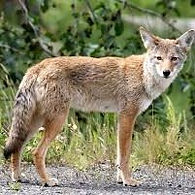
What To Do If You Encounter a Coyote While Walking Your Dog
What To Do If You Encounter a Coyote While Walking Your Dog
July2018
I don't know about you but I have heard and seen coyotes in my neighborhood. While they look like dogs, they are wild animals and can be very dangerous to your dog. I have two little dogs so coyotes can easily pick one up and take off with it. I read an article today about how to deal with a coyote if you see one on a walk with your dog. Some of the most important tips are below.
Four basic rules for walking dogs in coyote territory
1. Keep your dog on a 6-foot leash. This length is long enough to let your dog have some freedom but not so long that you can’t easily control your dog should you need to, especially at a moment’s notice. Retractable leashes are of little help to a dog owner, since it is very difficult to reel your dog back in if they are pulling on a long line way ahead of you.
2. Avoid areas known to have coyote activity, especially during breeding and pupping season. If there are signs posted or you’ve heard neighbors report coyotes sighted in a certain area, make the common-sense decision to avoid walking your dog in those areas. This is especially important during pupping season when mother and father coyotes will be more defensive of their den sites.
3. Stick to trails and open paths, and avoid areas with thick brush. Going off trail, following game trails, or heading into areas where there is thick brush lining the path increases your chances of running into a coyote. Staying on trail in open areas gives you plenty of time to spot and react to a coyote.
4. Avoid walking your dog at sunrise and sunset hours. Coyotes are naturally active during the day, though urban coyotes usually switch to nocturnal behavior. Either way, they are often active at twilight hours. If you’re walking your dog during sunrise or sunset, be aware that it increases your chances of an interaction with a coyote.
If you follow these simple rules, you’re way ahead of the game in enjoying a quiet walk with your dog with little chance of seeing, let alone interacting with a coyote. Truly, the most important rule is simply following all leash laws. Even if there is an area of open space where dogs are allowed off leash, unleash your dog ONLY if your dog has a solid and reliable recall. This simple behavior alone would send the number of dog-coyote conflicts plummeting.
Unfortunately, not everyone is going to abide by leash laws, nor will many people stop using retractable leashes that allow a small dog to wander a dozen feet or more away from their owner — far enough for a coyote to feel minimal threat from a human while eying the small dog as a possible meal. Large natural areas that welcome off-leash dogs are also welcoming to coyotes, and thus create the possibility for dog-coyote interactions and conflict.
In these areas and situations with a higher likelihood of running into coyotes, it is important to know what to do if you come across one.
What to do if you and your dog encounter a coyote
1. Leash your dog. Pick up and carry small dogs. It is important to have full control over your dog so that they do not run toward, away from, or otherwise engage the coyote.
2. Stand tall and assertive. Coyotes are wary of humans and your presence is usually enough to drive off a coyote. Maintain eye contact. Do not turn your back on the coyote and do not run. Running away can trigger a coyote’s prey drive and may cause him or her to chase you.
3. Haze the coyote until it leaves the area. This may come easy to some but to others seem abusive or unkind. But every coyote advocate will agree, the kindest thing you can do for a coyote is to scare it away, especially if he or she is overly curious about dogs. Keeping up a coyote’s natural fear of humans is the only way to keep urban coyotes alive, for a coyote that becomes too brazen is sure to end up euthanized.
Outside of pupping season (between the months of August and January) haze the coyote by yelling, stomping your feet, shaking a jacket or noise maker, popping an umbrella, flashing a flashlight, tossing rocks or branches at the ground near the coyote and anything else that will frighten the coyote off. If the coyote freezes, or runs a little way away and turns to watch you again, continue hazing and moving toward the coyote untilhe or she leaves the area entirely. Then calmly and assertively walk out of the area.
If it is breeding and pupping season (between the months of February and July) you may be near a den and considered a threat. It is important not to haze coyotes as normal, because coyotes will defend their den site and you’ll only be escalating a situation, causing undue stress on the coyote and potentially forcing a coyote to act out defensively. During these months, the best thing to do is to slowly and calmly walk away without ever turning your back on the coyote. Stay tall and assertive as you leave the area, even if it means walking backwards. Coyotes will sometimes follow you for a distance to escort you out of their territory, and turning your back may invite them to come in closer to hurry you on your way. Maintaining eye contact and an assertive posture keeps things balanced by letting the coyote know they do not have the upper hand while still respecting the coyotes defense of their den site.
4. Report overly brazen coyotes. If a coyote comes too close, follows you for too long, acts overly assertive or does not respond to hazing, report the coyote to city authorities. The coyote may have become habituated to humans or is being fed by someone, which can result in aggressive behavior. It may be that the coyote can be hazed by city officials to reverse its behavior or, as unfortunately is often the case, may have to be removed.
In addition to knowing what to do when your dog is on leash, you can also take steps to keep coyotes away from your neighborhood and your pets safe at home. These step include:
Do not let your pet outside alone, especially at night.
Do not keep pet food outside.
Haze coyotes every time you see them, regardless of if you have a pet with you (unless it is during pupping season).
Avoid having any attractants in your yard, which means picking up fallen fruit from trees, cleaning the BBQ grill, securing lids on trash cans, covering your compost piles, and removing anything else that might be a food, water, or shelter source for coyotes.
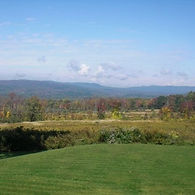
Tick Season and a Recipe for Natural Non-Toxic Tick Repellent
Tick Season and a Recipe for Natural Non-Toxic Tick Repellent
December 2017
With the melting snow and warmer weather comes the threat of ticks. So many of my clients' dogs have contracted Lyme Disease over the past several years. It is a real threat that isn't going away any time soon. Prevention and diligent tick checks are the best defense against Lyme Disease. If you are opposed to putting chemicals like Frontline on your pets there are other natural alternatives you can try. Even if you use the commercial preventative treatments a second line of defense is a good idea.
I make up my own tick repellent out of natural, non-toxic ingredients that I am happy to spray on my dogs, myself and my family. I have to say it really does the job. Here is the recipe in case you'd like to try it.
Natural Non-Toxic Tick Repellent Spray
1 Tbsp Vodka
1 Tbsp Witch Hazel
40 Drops of Rose Geranium Oil
1/3 Cup Distilled Water
Mix all ingredients together in a bowl and pour into a 4 oz spray bottle. Spray on your skin, clothing and your pets.
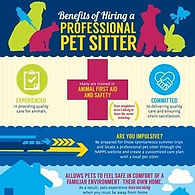
Why Hire a Professional Pet Sitter?
Why Hire a Professional Pet Sitter?
June 2017
Why should you only use a professional pet sitter? While having friends, family, or neighbors care for your pets may seem like a logical choice, professional pet sitters are trained in pet care and first aid and have the experience necessary to care for your animals. A professional pet sitter is experienced in working with all types of pet personalities and will know how to tailor your pet’s care based on their individual likes, dislikes, fears, and habits. We make sure all of their needs are met while you are away. We know how to spot and avoid potentially dangerous situations, and can react quickly and effectively when necessary. Professional pet sitters are trained and experienced in administering medications and know how to tell if your pet needs veterinary attention. Why burden your friends and family when you can hire a professional who is paid to be there for your pet? Your pet will be better off and you can rest easy knowing your beloved pet is being well taken care of.

My First Blog Entry
My First Blog Entry
January 2017
I hope this is one of many informative, fun posts for everyone. I LOVE animals and am living my dream in the Southern Berkshires by meeting and caring for so many beautiful dogs, cats, guinea pigs, rabbits, and more. Please check back often for pet care tips, useful health information and lots of cute pictures and stories about my days as a Professional Pet Sitter.